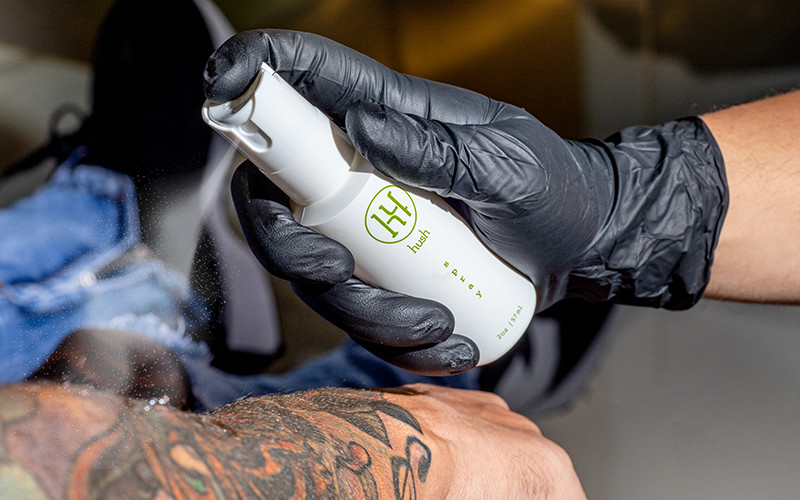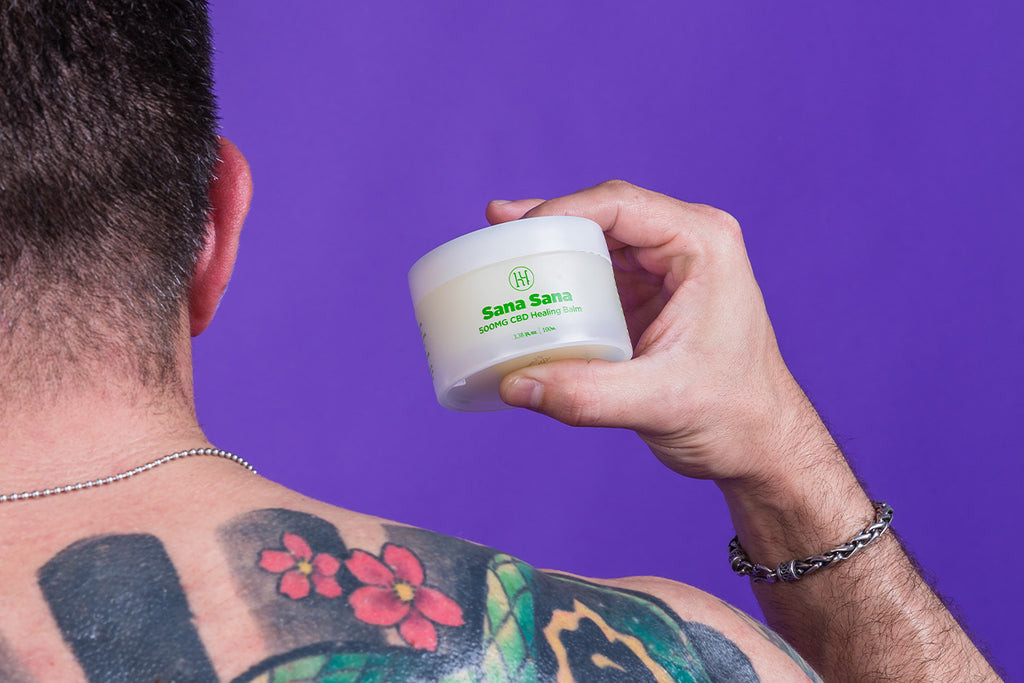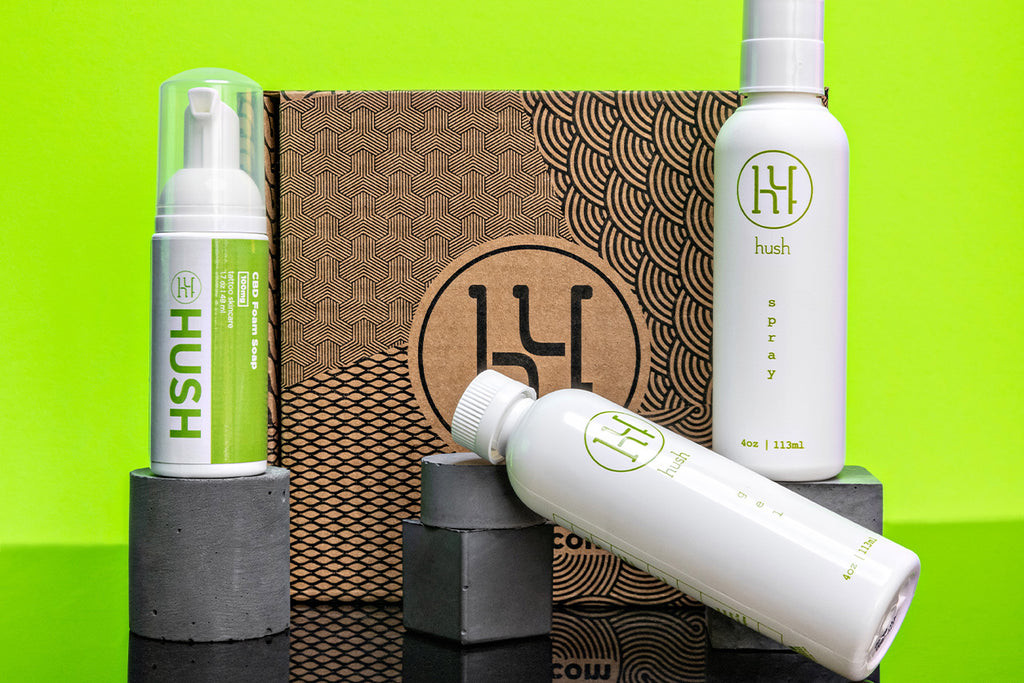Tattoo peeling is a common part of the tattoo healing journey, and understanding what to expect is key to a successful outcome. At tattooat.com, we’re dedicated to providing you with expert insights into the art and science of tattooing, ensuring your experience is both beautiful and safe. This guide will help you distinguish normal tattoo peeling from potential issues, offering solutions for optimal aftercare, and explore different styles.
1. What Exactly Is Tattoo Peeling?
Tattoo peeling is a natural exfoliation process that occurs as your skin regenerates after getting a tattoo. When you receive a tattoo, the tattoo artist uses needles to inject ink into the dermis layer of your skin, which lies beneath the epidermis (the outermost layer). The epidermis is disrupted during this process, causing it to undergo a healing phase that includes peeling. According to research from Portland State University’s Art Department, in July 2023, the healing process often involves the shedding of the outer layer of skin as new cells regenerate.
- The Process: Tattoo peeling usually begins about a week after getting inked. You’ll notice the top layer of skin starting to flake off, similar to a sunburn.
- Why It Happens: This peeling is your body’s way of getting rid of damaged skin cells as it repairs itself.
- What to Expect: The peeling process can last for a week or two, depending on the size and location of your tattoo.
2. Is Tattoo Peeling Normal, Or A Sign Of Something Worse?
Yes, tattoo peeling is typically a normal part of the healing process, but it’s crucial to differentiate between normal and abnormal peeling to ensure your tattoo heals correctly.
- Normal Peeling: This usually involves thin, light flakes of skin that peel off gradually. The peeling skin might even have some ink on it, but this is just the ink that was present in the dead skin cells and does not affect the tattoo’s appearance.
- Abnormal Peeling: Signs of abnormal peeling include excessive redness, swelling, pus, severe pain, or thick scabs. These symptoms may indicate an infection or allergic reaction.
3. What Does Normal Tattoo Peeling Look Like?
Normal tattoo peeling resembles the flaking you might experience after a mild sunburn.
- Thin flakes: The peeling skin should be thin and papery.
- Color: You might notice some color in the flakes.
- Timing: Peeling typically starts around day 4 or 5 and lasts for about a week.
4. What Does Bad Tattoo Peeling Look Like?
Bad peeling is characterized by more severe symptoms that suggest a problem.
- Redness and Swelling: Excessive redness and swelling around the tattoo area.
- Pus: Any discharge of pus from the tattoo.
- Pain: Increased pain or tenderness.
- Thick Scabs: Large, thick scabs that may be difficult to remove.
- Foul Smell: An unpleasant odor coming from the tattoo.
5. What Happens If I Pick At My Tattoo?
Picking at a peeling tattoo can lead to several complications that can affect the tattoo’s appearance and your skin’s health. Resist the urge to pick at your tattoo, as it can cause significant damage.
- Ink Loss: Picking can pull out ink, leading to a patchy, faded tattoo.
- Scarring: Premature removal of skin can cause scarring, resulting in raised or uneven areas.
- Infection: Open wounds are susceptible to bacterial infection.
6. Can Peeling Ruin A Tattoo?
Yes, improper handling of a peeling tattoo can potentially ruin the tattoo’s appearance and compromise the healing process.
- Uneven Healing: Picking or peeling off skin prematurely can disrupt the healing process, leading to uneven skin texture and discoloration.
- Ink Displacement: Peeling off skin can cause the ink to shift or become dislodged, resulting in blurry or faded lines.
- Infection: Disrupting the skin barrier can increase the risk of bacterial infection, which can cause inflammation, scarring, and distortion of the tattoo design.
- Scar Formation: Aggressive peeling or picking can damage the underlying tissues, leading to the formation of scars that can alter the appearance of the tattoo.
7. How Long Does Tattoo Peeling Last?
The duration of tattoo peeling varies from person to person, but it generally lasts around one to two weeks.
- Factors Affecting Duration: Factors such as the size and location of the tattoo, the individual’s skin type, and aftercare practices can influence how long the peeling lasts.
- Typical Timeline: Peeling typically begins within the first week after getting the tattoo and gradually subsides over the following one to two weeks.
- Individual Variation: Some people may experience minimal peeling, while others may have more extensive peeling.
8. Why Is My Tattoo Not Peeling?
Not all tattoos peel, and the absence of peeling doesn’t necessarily indicate a problem.
- Skin Type: Some people naturally shed less skin during the healing process.
- Aftercare: Proper moisturizing can minimize peeling.
- Tattoo Technique: The artist’s technique can also influence peeling.
9. What Should I Do If My Tattoo Is Peeling?
When your tattoo starts to peel, it’s essential to follow a proper aftercare routine to promote healing and prevent complications.
- Keep It Clean: Gently wash the tattoo with mild, fragrance-free soap and warm water.
- Moisturize: Apply a thin layer of tattoo-specific moisturizer or a fragrance-free, hypoallergenic lotion.
- Avoid Sun Exposure: Protect the tattoo from direct sunlight.
- Wear Loose Clothing: Choose loose-fitting clothing to avoid friction and irritation.
- Stay Hydrated: Drink plenty of water to keep your skin hydrated.
 Washing Your Tattoo While Peeling
Washing Your Tattoo While Peeling
10. What Should I Avoid When My Tattoo Is Peeling?
To ensure your tattoo heals properly and looks its best, there are several things you should avoid during the peeling stage.
- Picking or Scratching: Avoid picking, scratching, or rubbing the peeling skin.
- Harsh Soaps or Cleansers: Stay away from harsh soaps, alcohol-based cleansers, or abrasive scrubs.
- Excessive Water Exposure: Limit prolonged soaking in water, such as baths or swimming pools.
- Tight Clothing: Avoid wearing tight clothing that can rub against the tattoo.
- Sun Exposure: Protect the tattoo from direct sunlight.
11. Can I Shower With A Peeling Tattoo?
Yes, you can shower with a peeling tattoo, but you should take certain precautions to protect the area and promote healing.
- Use Lukewarm Water: Opt for lukewarm water instead of hot water, as hot water can dry out the skin and cause irritation.
- Gentle Cleansing: Use a mild, fragrance-free soap or cleanser to gently clean the tattoo.
- Avoid Direct Water Pressure: Avoid directing the shower stream directly onto the tattoo, as the water pressure can be too harsh.
- Pat Dry: After showering, gently pat the tattoo dry with a clean, soft towel.
- Moisturize: Apply a thin layer of tattoo-specific moisturizer or a fragrance-free lotion to keep the skin hydrated.
12. Should I Moisturize My Tattoo While Its Peeling?
Yes, moisturizing your tattoo while it’s peeling is essential for promoting healing, relieving discomfort, and preventing complications.
- Hydration: Moisturizing helps to keep the skin hydrated, which can reduce itching, dryness, and irritation.
- Barrier Protection: A layer of moisturizer can create a protective barrier over the tattoo, shielding it from environmental irritants and bacteria.
- Skin Repair: Certain moisturizers contain ingredients that promote skin repair and regeneration.
- Enhanced Comfort: Moisturizing can provide a soothing sensation, making the peeling process more comfortable.
13. How Often Should I Moisturize My Peeling Tattoo?
The frequency of moisturizing a peeling tattoo depends on individual factors, such as skin type and environmental conditions.
- General Guideline: As a general guideline, you should moisturize your tattoo 2-3 times per day.
- Listen to Your Skin: Pay attention to how your skin feels and adjust the frequency accordingly.
- After Washing: Always moisturize your tattoo after washing it.
- Before Bed: Apply moisturizer before going to bed to keep the skin hydrated overnight.
 Moisturizing a Tattoo During the Peeling Stage
Moisturizing a Tattoo During the Peeling Stage
14. What Kind Of Lotion Should I Use?
Choosing the right lotion for your peeling tattoo is crucial for promoting healing, preventing irritation, and maintaining the vibrancy of the ink.
- Fragrance-Free: Opt for lotions that are fragrance-free to minimize the risk of allergic reactions or irritation.
- Hypoallergenic: Select hypoallergenic lotions that are formulated to be gentle on sensitive skin.
- Tattoo-Specific: Consider using tattoo-specific lotions that are designed to meet the unique needs of tattooed skin.
- Ingredients to Look For: Look for lotions that contain beneficial ingredients such as vitamins, antioxidants, and natural oils.
- Ingredients to Avoid: Steer clear of lotions that contain harsh chemicals, alcohol, or petroleum-based ingredients.
15. My Tattoo Is Peeling A Month Later, Is This Normal?
While tattoo peeling typically occurs within the first few weeks after getting inked, experiencing peeling a month later is less common but not necessarily abnormal.
- Delayed Reaction: Some people may experience a delayed reaction to the tattoo ink or aftercare products, leading to peeling at a later stage.
- Dry Skin: Dry skin can contribute to peeling, especially in arid climates or during the winter months.
- Irritation: Irritation from clothing, friction, or harsh chemicals can trigger peeling.
- Underlying Skin Conditions: In some cases, underlying skin conditions such as eczema or psoriasis may contribute to delayed peeling.
16. How Do I Know If My Tattoo Is Infected?
Distinguishing between normal tattoo healing and infection is crucial for ensuring proper care and preventing complications.
- Excessive Redness: While some redness is normal in the initial days, persistent or worsening redness can indicate an infection.
- Swelling: Swelling is a natural part of the healing process, but excessive swelling or puffiness around the tattoo may be a sign of infection.
- Pain: Mild discomfort is expected, but severe or increasing pain could indicate an infection.
- Pus or Discharge: Any discharge of pus or fluid from the tattoo is a clear sign of infection.
- Foul Odor: An unpleasant odor emanating from the tattoo area is a red flag for infection.
- Fever or Chills: Systemic symptoms such as fever or chills may indicate a more serious infection that requires medical attention.
17. What Do I Do If I Think My Tattoo Is Infected?
If you suspect that your tattoo is infected, it’s essential to take prompt action to prevent the infection from spreading and causing further complications.
- Consult a Healthcare Professional: Seek medical attention from a doctor or dermatologist as soon as possible.
- Avoid Self-Treatment: Refrain from attempting to treat the infection yourself, as this may worsen the condition or lead to complications.
- Follow Medical Advice: Follow the healthcare professional’s advice and treatment plan diligently.
- Keep the Area Clean: Gently clean the tattoo area with mild soap and water, as advised by your healthcare provider.
- Monitor Symptoms: Keep a close eye on your symptoms and report any changes or concerns to your healthcare provider.
18. What Are Some Tips To Speed Up Tattoo Peeling?
While it’s essential to let your tattoo peel naturally, there are some tips to support the process and promote healing.
- Stay Hydrated: Drink plenty of water to keep your skin hydrated from the inside out.
- Gentle Exfoliation: Consider gentle exfoliation techniques to remove dead skin cells and encourage peeling.
- Moisturize Regularly: Keep the tattoo area well-moisturized to prevent dryness and promote healthy skin turnover.
- Avoid Irritants: Steer clear of harsh chemicals, fragrances, and irritants that can slow down the healing process.
- Protect from Sun Exposure: Shield the tattoo from direct sunlight to prevent damage and promote healing.
19. Can I Put Saniderm On A Tattoo That Is Already Peeling?
Applying Saniderm, a popular tattoo bandage, to a tattoo that is already peeling is not recommended.
- Not Recommended: Saniderm is designed to be applied to freshly tattooed skin to protect it during the initial healing phase.
- Potential Risks: Applying Saniderm to peeling skin can trap moisture and bacteria, increasing the risk of infection.
- Discomfort: Removing Saniderm from peeling skin can be painful and may damage the tattoo.
20. What Are Some Products That Can Help With The Tattoo Peeling Process?
To support the tattoo peeling process and promote optimal healing, consider using the following products:
- Mild Soap: Choose a gentle, fragrance-free soap to cleanse the tattoo area without causing irritation.
- Tattoo Balm: Tattoo balms are specifically formulated with nourishing ingredients to moisturize and protect tattooed skin.
- Tattoo Lotion: Select a high-quality tattoo lotion that is fragrance-free, hypoallergenic, and contains beneficial ingredients.
- Sunscreen: Protect your tattoo from harmful UV rays by applying a broad-spectrum sunscreen with a high SPF.
- CBD Products: CBD-infused products can help soothe inflammation and promote healing.
 Hush Aftercare
Hush Aftercare
Understanding the tattoo peeling process is essential for ensuring your tattoo heals beautifully. Remember, at tattooat.com, we are here to guide you through every step of your tattoo journey, from selecting the perfect design to mastering aftercare.
Ready to explore stunning tattoo designs, discover talented artists, and delve deeper into the world of tattoo knowledge? Visit tattooat.com today and unlock a world of inspiration and expertise. Let us help you make your tattoo dreams a reality. Find inspiration, artists, and knowledge all in one place.
